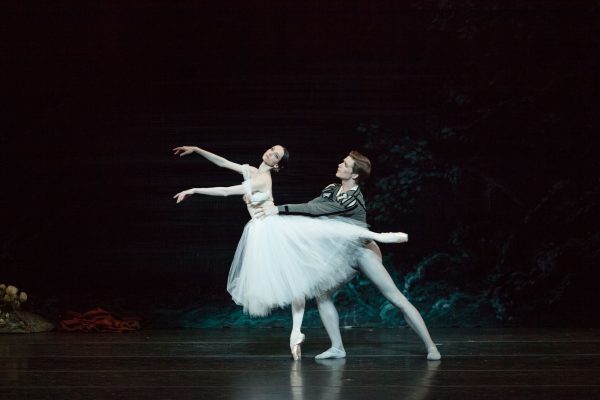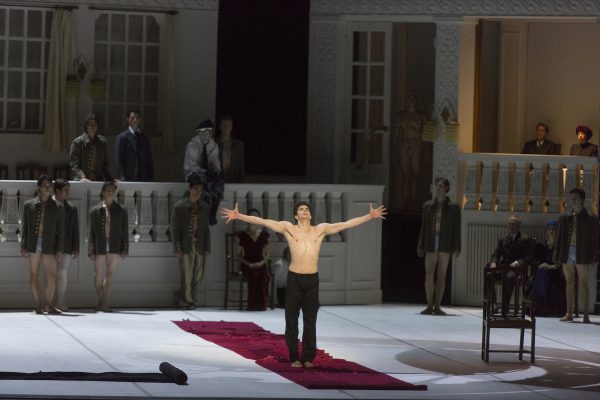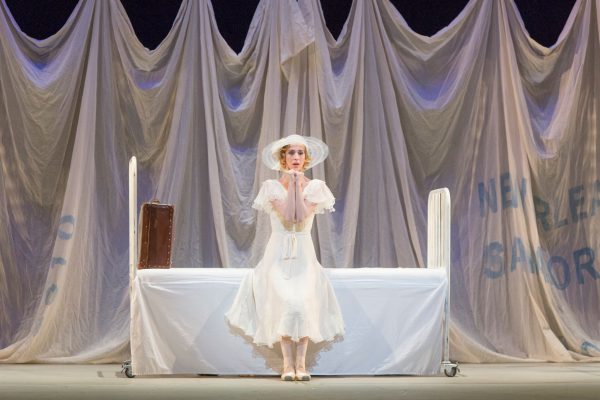According to many, Vaslav Nijinsky was the greatest male dancer of the twentieth century. Maybe even the best to ever live. Despite the tragic end of his career (due to schizophrenia) at the early age of twenty-nine, the mad genius dancer and choreographer led a passionate life full of sex, love and dance, which is showcased brilliantly in John Neumeier’s ballet Nijinsky. Performed by The National Ballet of Canada at the Four Seasons Centre from November 22-30, the ballet provides a glimpse into dance history, citing the beautiful choreography and costumes of historically famous works. And it leaves you on the edge of your seat from beginning to end as the madness of a mad genius in both art and in mental state unfolds.
The ballet is not a biography of Nijinsky’s life per se, nor does it unfold in chronological order. It begins with Nijinsky’s last performance on January 19, 1919, when Nijinsky danced publicly for the last time and called his performance a “Wedding with God.” A realistic recreation of this event, from Neumeier’s research, shows Nijinsky before a small audience, which includes the woman in the red dress — his wife Romola Nijinksy — played on opening night by the beautiful Xiao Nan Yu. The performance starts with movement quotations from past roles, but also uses new movement that looks as if Nijinsky is wrestling with himself, showing his psychological duress. During this performance, Nijinsky is sent into a dreamlike state, one which is full of his own hallucinations and memories. He imagines a former lover and protector — Serge Diaghilev. Diaghilev was one of the most acclaimed ballet directors and opera producers of the early twentieth century, responsible for the Ballets Russes, itself one of the most influential dance companies of the same period. Nijinsky also imagines his brother who rolls across the stage in a straightjacket (as his brother had earlier been committed to an asylum). This dramatic introduction of the program, sets up a theatrical ride that lasts for the entire performance.
Although it would help to have some knowledge of the events of Nijinsky’s life before seeing this show, such knowledge is not required and one is easily drawn into the beautiful choreography and dramatic music regardless. The constantly changing costumes and sets will keep you enticed for the full program, as you are never quite sure what will happen next. The incredible cast doesn’t miss a beat and are fully involved in their characters from beginning to end.
For those who do not know much about Nijinsky, the ballet also acts as a crash course on his famous choreography and roles. During his hallucinations he dances duets with “himself” as other members of the company perform his famed roles, such as The Golden Slave in Scheherazade (1911), The Faun in L’Après-midi d’une Faune (1912) and the sad puppet in Petrushka (1911), connecting each character to his own life and story. The different movement qualities that come with each character show the complexity of Nijinsky’s roles, yet I am more impressed with the way Neumeier is able to bring such different movement qualities together so seamlessly. Through playing with past choreography in a contemporary work, he is able to play around with history and show it in an innovative light unlike anything I have seen.
A great moment in the piece occurs when Nijinsky’s relationship with Diaghilev is compared to his role in Petrushka. Diaghilev appears to be pulling his strings, and watching Nijinksy/Petrushka’s every move. Later, the two lovers go on to have a very tense duet, which is interrupted by a character from Jeux, a ballet choreographed by Nijinsky in 1913. A young man enters with a tennis racket, as in Jeux, and takes Diaghilev away from Nijinsky. Nijinsky originally choreographed Jeux for three men, but he was pressured to change the piece so that it could be performed by two women and a man. The original idea would have been too controversial at the time. Yet Neumeier is able to restore Jeux to its all-male trio in his own story. The intersection of famous choreography from the past and present creates intense drama onstage and leaves you craving a longer immersion in the world of Nijinsky.
Nijinsky is played by a modern-day ballet superstar, Guillaume Côté, who has no trouble connecting to Nijinsky’s dramatic life. Both are known as ballet “hunks” with amazing technical ability. His acting skills were put to the test with this piece and he did a magnificent job playing in the mad genius’s world, all while making every movement technically sound and beautiful.
The ballet ends where it began, back at Nijinsky’s final performance in 1919, the moments just before he would be diagnosed and subsequently spend the rest of his life in and out of psychiatric hospitals and asylums. Yet this time we witness the performance from Nijinsky’s point of view, instead of that of his audience. I love this choice by Neumeier for the ending as it shows the final spiral of Nijinsky’s mental state for, as the program states, in his eyes he had not gone mad, rather the world around him had.~
The Emerging Dance Critics Programme is a partnership with The National Ballet of Canada, grounded in The Dance Current’s educational mandate. Reading Writing Dancing is one of The Dance Current’s educational programs, providing workshops, seminars, mentorship and professional development to emerging and established dance writers alike. As part of our commitment to the field, we partner with like-minded organizations, such as The National Ballet of Canada, to educate dance readers and dance writers, providing public access to dance art and culture, and facilitating dance literacy and appreciation.
Tagged: Ballet, Emerging Arts Critics Programme, John Neumeier, Performance, Writing, ON , Toronto




